Note
Click here to download the full example code
Audio Data Augmentation¶
Author: Moto Hira
torchaudio provides a variety of ways to augment audio data.
In this tutorial, we look into a way to apply effects, filters, RIR (room impulse response) and codecs.
At the end, we synthesize noisy speech over phone from clean speech.
import torch
import torchaudio
import torchaudio.functional as F
print(torch.__version__)
print(torchaudio.__version__)
import matplotlib.pyplot as plt
2.10.0.dev20251013+cu126
2.8.0a0+1d65bbe
Preparation¶
First, we import the modules and download the audio assets we use in this tutorial.
from IPython.display import Audio
from torchaudio.utils import _download_asset
SAMPLE_WAV = _download_asset("tutorial-assets/steam-train-whistle-daniel_simon.wav")
SAMPLE_RIR = _download_asset("tutorial-assets/Lab41-SRI-VOiCES-rm1-impulse-mc01-stu-clo-8000hz.wav")
SAMPLE_SPEECH = _download_asset("tutorial-assets/Lab41-SRI-VOiCES-src-sp0307-ch127535-sg0042-8000hz.wav")
SAMPLE_NOISE = _download_asset("tutorial-assets/Lab41-SRI-VOiCES-rm1-babb-mc01-stu-clo-8000hz.wav")
30.0%
59.9%
89.9%
100.0%
100.0%
100.0%
100.0%
Loading the data¶
waveform1, sample_rate = torchaudio.load(SAMPLE_WAV, channels_first=False)
print(waveform1.shape, sample_rate)
torch.Size([109368, 2]) 44100
Let’s listen to the audio.
def plot_waveform(waveform, sample_rate, title="Waveform", xlim=None):
waveform = waveform.numpy()
num_channels, num_frames = waveform.shape
time_axis = torch.arange(0, num_frames) / sample_rate
figure, axes = plt.subplots(num_channels, 1)
if num_channels == 1:
axes = [axes]
for c in range(num_channels):
axes[c].plot(time_axis, waveform[c], linewidth=1)
axes[c].grid(True)
if num_channels > 1:
axes[c].set_ylabel(f"Channel {c+1}")
if xlim:
axes[c].set_xlim(xlim)
figure.suptitle(title)
def plot_specgram(waveform, sample_rate, title="Spectrogram", xlim=None):
waveform = waveform.numpy()
num_channels, _ = waveform.shape
figure, axes = plt.subplots(num_channels, 1)
if num_channels == 1:
axes = [axes]
for c in range(num_channels):
axes[c].specgram(waveform[c], Fs=sample_rate)
if num_channels > 1:
axes[c].set_ylabel(f"Channel {c+1}")
if xlim:
axes[c].set_xlim(xlim)
figure.suptitle(title)
plot_waveform(waveform1.T, sample_rate, title="Original", xlim=(-0.1, 3.2))
plot_specgram(waveform1.T, sample_rate, title="Original", xlim=(0, 3.04))
Audio(waveform1.T, rate=sample_rate)
Simulating room reverberation¶
Convolution reverb is a technique that’s used to make clean audio sound as though it has been produced in a different environment.
Using Room Impulse Response (RIR), for instance, we can make clean speech sound as though it has been uttered in a conference room.
For this process, we need RIR data. The following data are from the VOiCES dataset, but you can record your own — just turn on your microphone and clap your hands.
rir_raw, sample_rate = torchaudio.load(SAMPLE_RIR)
plot_waveform(rir_raw, sample_rate, title="Room Impulse Response (raw)")
plot_specgram(rir_raw, sample_rate, title="Room Impulse Response (raw)")
Audio(rir_raw, rate=sample_rate)
First, we need to clean up the RIR. We extract the main impulse and normalize it by its power.
rir = rir_raw[:, int(sample_rate * 1.01) : int(sample_rate * 1.3)]
rir = rir / torch.linalg.vector_norm(rir, ord=2)
plot_waveform(rir, sample_rate, title="Room Impulse Response")
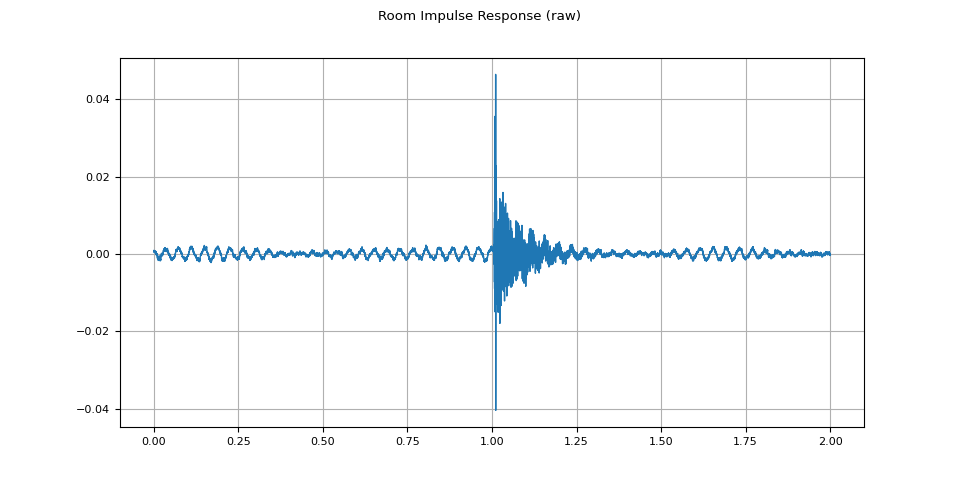
Then, using torchaudio.functional.fftconvolve(),
we convolve the speech signal with the RIR.
Original¶
plot_waveform(speech, sample_rate, title="Original")
plot_specgram(speech, sample_rate, title="Original")
Audio(speech, rate=sample_rate)
RIR applied¶
plot_waveform(augmented, sample_rate, title="RIR Applied")
plot_specgram(augmented, sample_rate, title="RIR Applied")
Audio(augmented, rate=sample_rate)
Adding background noise¶
To introduce background noise to audio data, we can add a noise Tensor to the Tensor representing the audio data according to some desired signal-to-noise ratio (SNR) [wikipedia], which determines the intensity of the audio data relative to that of the noise in the output.
$$ \mathrm{SNR} = \frac{P_{signal}}{P_{noise}} $$
$$ \mathrm{SNR_{dB}} = 10 \log _{{10}} \mathrm {SNR} $$
To add noise to audio data per SNRs, we
use torchaudio.functional.add_noise().
speech, _ = torchaudio.load(SAMPLE_SPEECH)
noise, _ = torchaudio.load(SAMPLE_NOISE)
noise = noise[:, : speech.shape[1]]
snr_dbs = torch.tensor([20, 10, 3])
noisy_speeches = F.add_noise(speech, noise, snr_dbs)
Background noise¶
plot_waveform(noise, sample_rate, title="Background noise")
plot_specgram(noise, sample_rate, title="Background noise")
Audio(noise, rate=sample_rate)
SNR 20 dB¶
snr_db, noisy_speech = snr_dbs[0], noisy_speeches[0:1]
plot_waveform(noisy_speech, sample_rate, title=f"SNR: {snr_db} [dB]")
plot_specgram(noisy_speech, sample_rate, title=f"SNR: {snr_db} [dB]")
Audio(noisy_speech, rate=sample_rate)
SNR 10 dB¶
snr_db, noisy_speech = snr_dbs[1], noisy_speeches[1:2]
plot_waveform(noisy_speech, sample_rate, title=f"SNR: {snr_db} [dB]")
plot_specgram(noisy_speech, sample_rate, title=f"SNR: {snr_db} [dB]")
Audio(noisy_speech, rate=sample_rate)
SNR 3 dB¶
snr_db, noisy_speech = snr_dbs[2], noisy_speeches[2:3]
plot_waveform(noisy_speech, sample_rate, title=f"SNR: {snr_db} [dB]")
plot_specgram(noisy_speech, sample_rate, title=f"SNR: {snr_db} [dB]")
Audio(noisy_speech, rate=sample_rate)
Total running time of the script: ( 0 minutes 7.726 seconds)



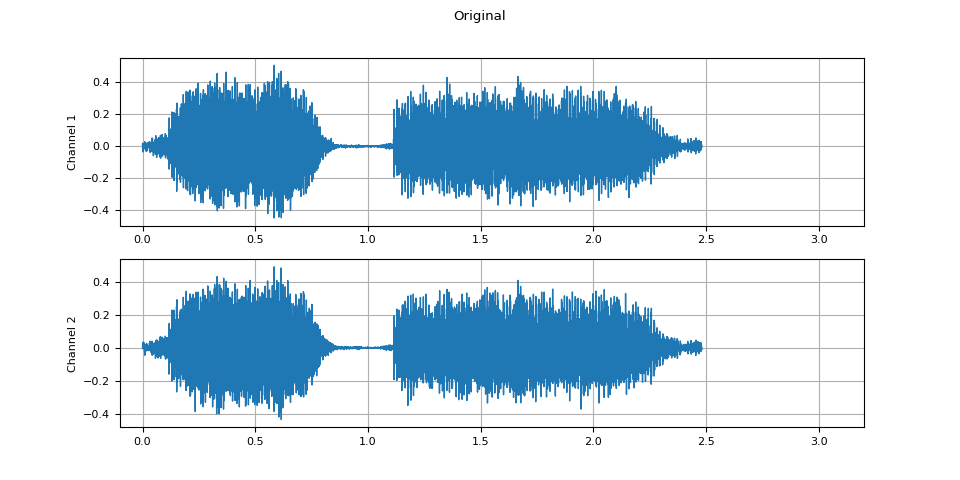
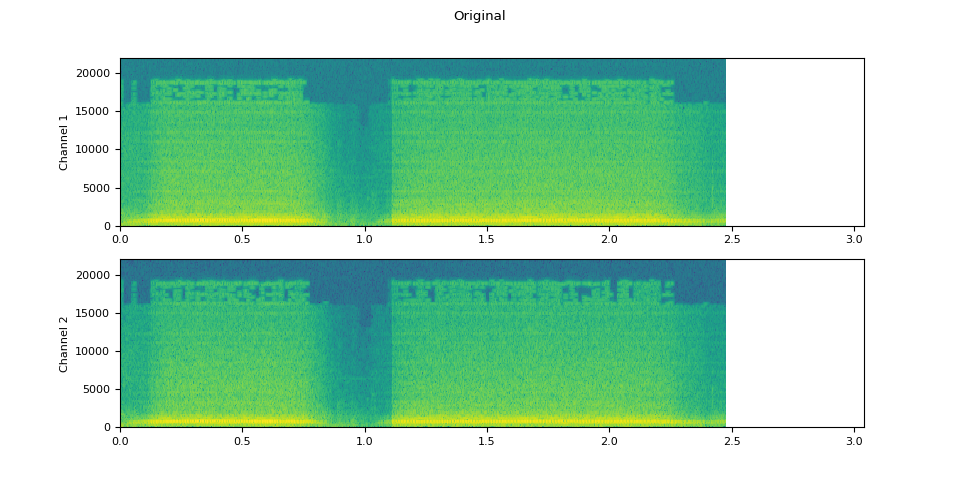
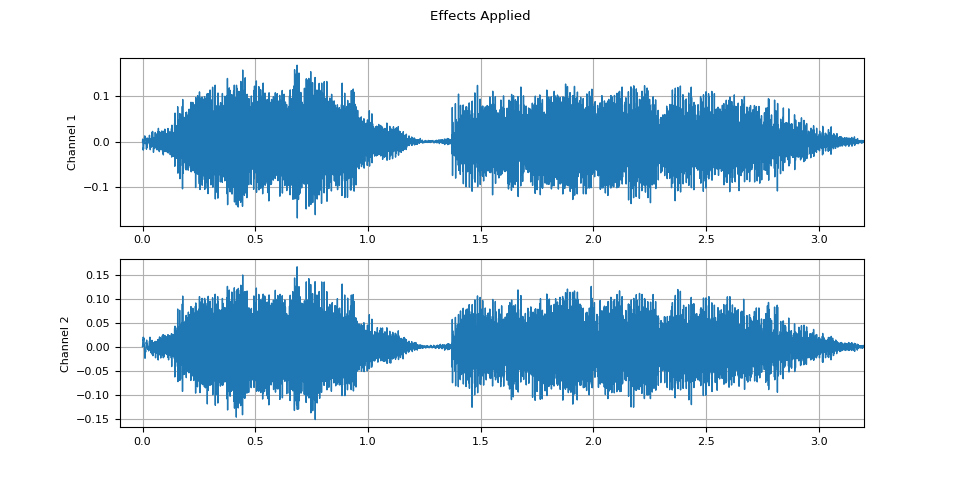
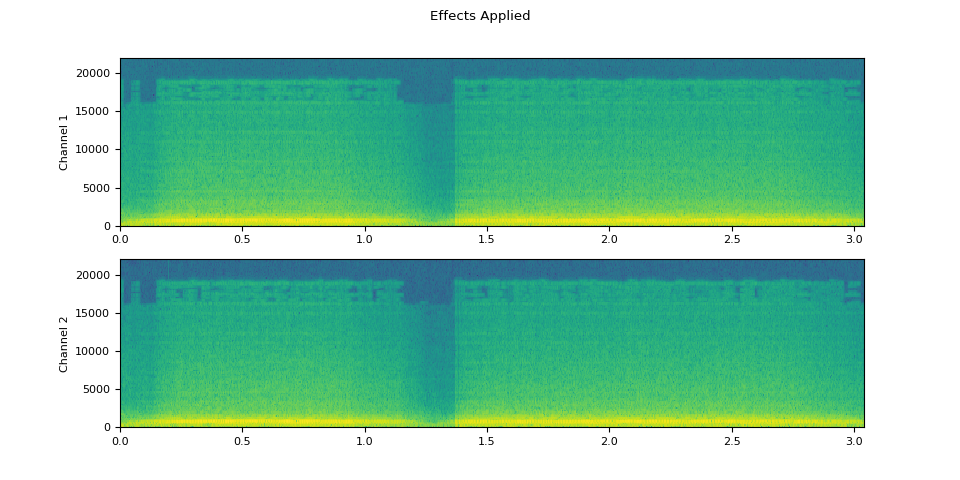
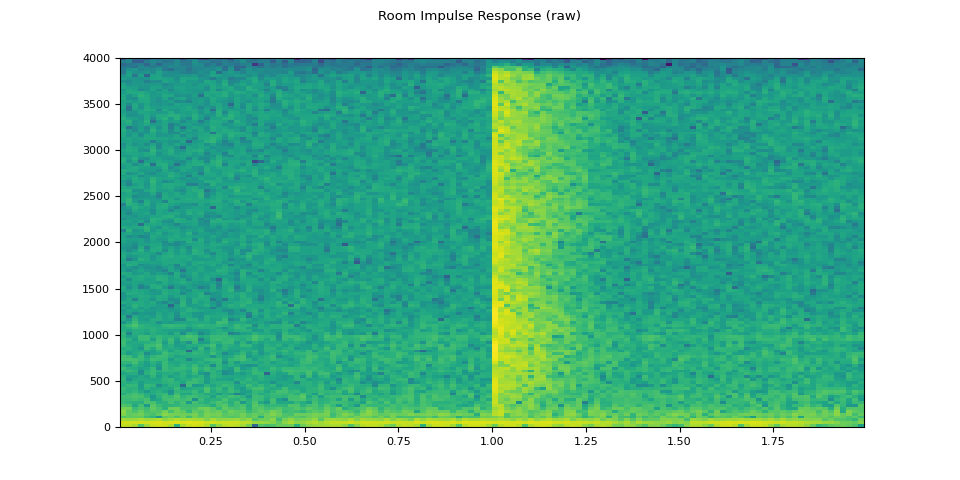
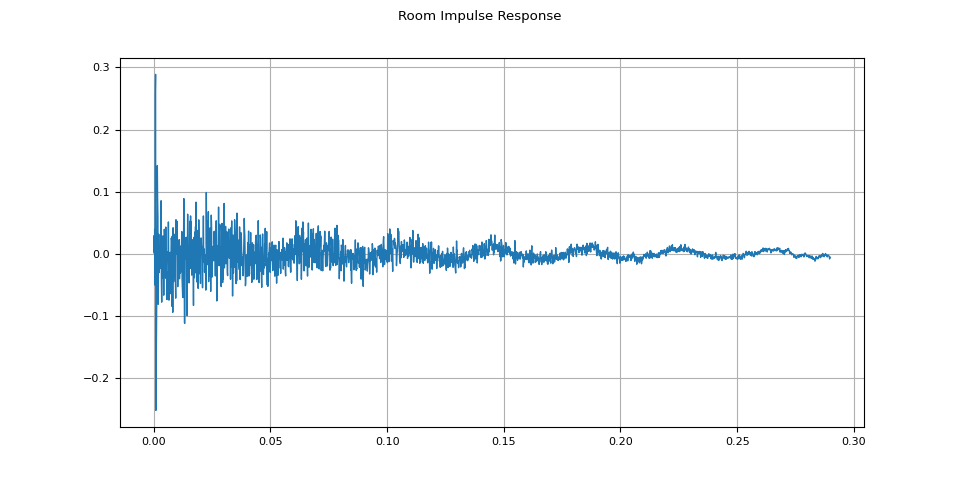
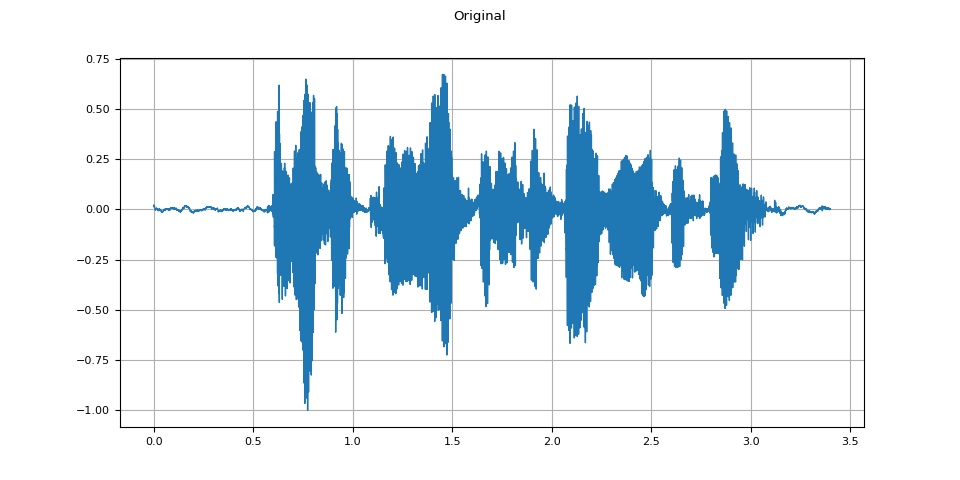
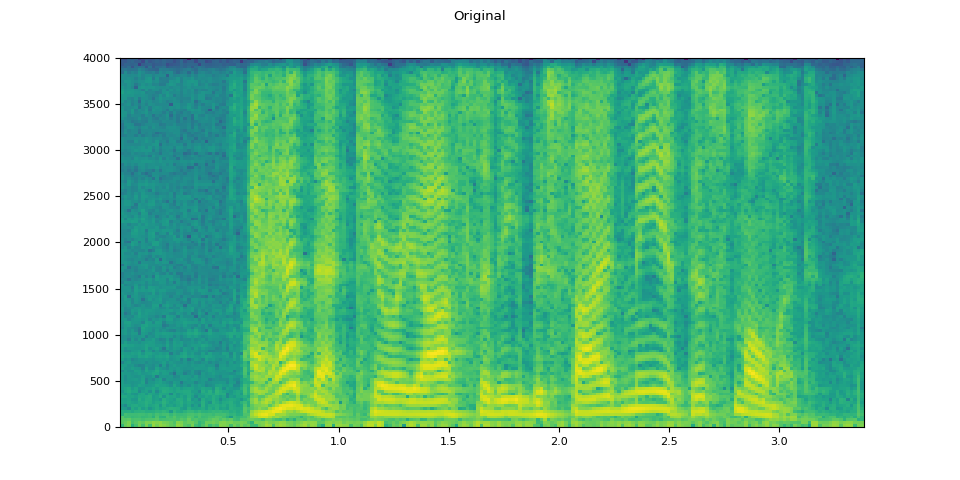
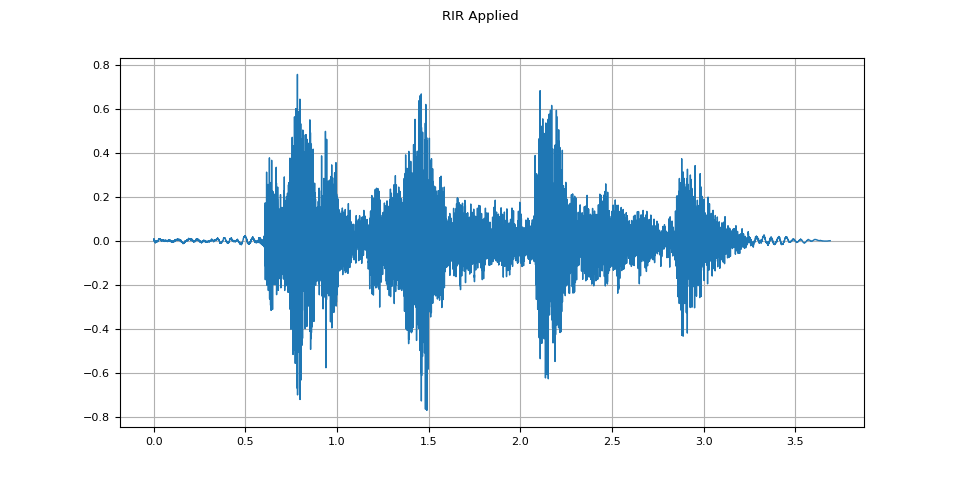
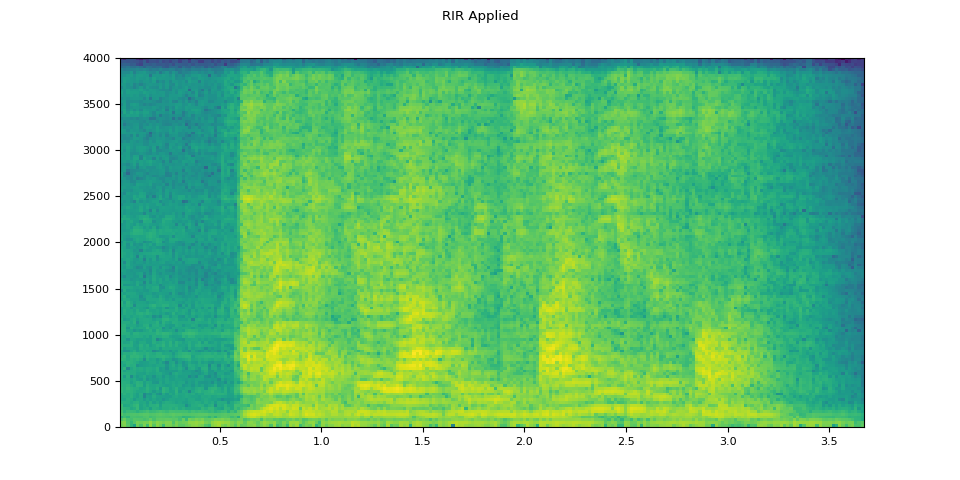
![SNR: 20 [dB]](../_images/sphx_glr_audio_data_augmentation_tutorial_012.png)
![SNR: 20 [dB]](../_images/sphx_glr_audio_data_augmentation_tutorial_013.png)
![SNR: 10 [dB]](../_images/sphx_glr_audio_data_augmentation_tutorial_014.png)
![SNR: 10 [dB]](../_images/sphx_glr_audio_data_augmentation_tutorial_015.png)
![SNR: 3 [dB]](../_images/sphx_glr_audio_data_augmentation_tutorial_016.png)
![SNR: 3 [dB]](../_images/sphx_glr_audio_data_augmentation_tutorial_017.png)
